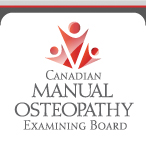Hip Bursitis
What is hip bursitis?
Hip bursitis is a common problem that causes pain over the outside of the upper thigh. A bursa is a fluid filled sac that allows smooth motion between two uneven surfaces. For example, in the hip, a bursa rests between the bony prominence over the outside of the hip (the greater trochanter) and the firm tendon that passed over this bone. When the bursal sac becomes inflamed, each time the tendon has to move over the bone, pain results. Because patients with hip bursitis move this tendon with each step, hip bursitis symptoms can be quite painful.
Causes of Hip Bursitis
Hip bursitis can be associated with different types of patients:- Athletes
Hip bursitis is commonly seen in runners or athletes who participate in running-oriented sports (e.g. soccer, football, etc.). - Injuries
Hip bursitis is sometimes associated with patients who fall onto their upper thigh, causing a so-called traumatic bursitis. The symptoms are similar to a hip pointer. - Post-surgical
Patients who have had surgery, such as hip fracture surgery, or total hip replacement, may complain of pain over the outside of the hip. These symptoms are often due to irritation to the bursa causing hip bursitis.
Diagnosis of Hip Bursitis
The diagnosis of hip bursitis is made most reliably on physical examination. The most common symptoms of hip bursitis include:- Tenderness over the bony prominence of the upper/outer thigh
- Swelling over the bursa
What else can cause symptoms similar to hip bursitis?
As with any medical condition, other problems that can cause similar symptoms should be considered. Hip bursitis is usually a clear diagnosis, and the symptoms can be distinguished from other conditions. However, some cases of hip bursitis can be confused with other medical conditions. These include:
These are the most common causes of pain over the upper/outer thigh, other than hip bursitis. Other causes of pain in this area include hip joint problems, such as arthritis and labral tears, but these usually cause symptoms in areas other than the outside of the thigh.As with any medical condition, other problems that can cause similar symptoms should be considered. Hip bursitis is usually a clear diagnosis, and the symptoms can be distinguished from other conditions. However, some cases of hip bursitis can be confused with other medical conditions. These include:
Treatment of Hip Bursitis
Treatment of hip burisitis usually begin with some simple steps, and progresses depending on the individual's response to these treatments. Most people can find relief from their symptoms with noninvasive treatments for hip bursitis. However, some people have challenges curing their symptoms of hip bursitis, and may require more invasive treatments.The best treatment for hip bursitis, or any form of bursitis, is aimed at controlling the inflammation caused by this condition. As with any treatment program, always talk with your doctor before initiating any specific treatments. The general treatment of hip bursitis consists of:
- Rest
This usually means a period of time not participating in sports or activities that aggravate your symptoms. As a general rule of thumb, any activity that causes hip bursitis pain should be avoided--this only contributes to inflammation of the bursa. - Anti-inflammatory Medications
Anti-inflammatory medications (e.g. Motrin, Aleve, Naprosyn, etc.) will help control the inflammation associated with hip bursitis. These medications are helpful for the pain as well as diminishing inflammation. - Ice the Injury
Icing the area of hip bursitis often helps to alleviate the symptoms of hip bursitis. Especially after exercise, ice can control inflammation, and stimulate blood flow to the injured area. - Aspiration/Drainage of the Bursa
In some patients who have a significant amount of fluid that has collected within the bursa, a needle can be placed into the bursa to remove the fluid. This is rarely needed in cases of hip bursitis, but when it is done it may be combined with a cortisone injection (see below). - Cortisone Injection
A cortisone injection may also be given into the bursa in patients with pain. The cortisone injection is helpful because it can be both diagnostic and therapeutic. In cases where hip bursitis may be one of several diagnoses being considered, cortisone can be given to see if the shot helps to alleviate symptoms.
- Stretching
Most patients find relief with stretching of the muscles and tendons that are found over the outside of the hip, specifically the iliotibial band. The idea is that a better conditioned muscle and tendon will glide more easily and not cause hip bursitis. Special attention to proper stretching technique is important. - Physical Therapy
Working with a physical therapist is a useful treatment adjunct for patients with hip bursitis. Not only can the therapist help develop a proper stretching and exercise program, but they can use modalities such as ultrasound which may be helpful as well.
Is surgery ever necessary for hip bursitis?
Surgical treatment for hip bursitis is rarely needed, and most patients who are faithful about treatment get better within about six weeks. Patients who do not rest from their activities until the inflammation subsides often have a return of hip bursitis symptoms. Also, patients who return too aggressively (i.e. not a gradual build-up), may also find that their symptoms return.
In those few cases where surgery is needed, this can be done through a small incision, or sometimes it can be performed arthroscopically. Either way, the bursa is simply removed (called a bursectomy), and the patient can resume their activities. The surgery is done as an outpatient, and most often crutches are only used for a few days. Patient's do not need a bursa, and therefore there are few complications from this type of surgery. The most common complications are anesthetic-related complications, and infection.
About.com orthopedics
About.com orthopedics








 4:48
4:48
 Daniel Enriquez de Guevara
Daniel Enriquez de Guevara




























.jpg)






















0 comentarios :
Publicar un comentario